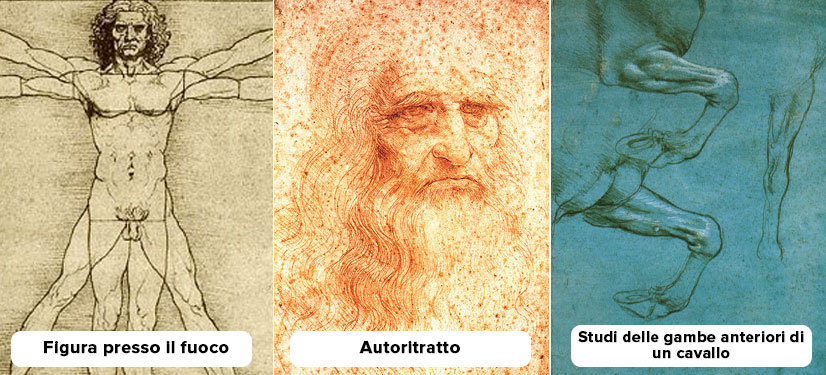
Yes! You read that 100% right! When it comes to admiring Leonardo da Vinci’s stunning works – from the Mona Lisa to his famous self-portraits, to groundbreaking anatomical paintings – there is more to them than meets the eyes, quite literally! While his paintings and works have been carefully preserved and studied for centuries, other archives from these same paintings remained relatively unexplored. Scientists recently discovered that there are troves of mysterious microbes resting on the surface of some of these unexplored paintings – countless in number and invisible to human eyes but full of fascinating tales, spread all across these priceless works.

A team of microbiologists in Italy and Austria recently took a closer look at some famous paintings by Da Vinci that were housed in the Royal Library of Turin and in the Corsini Library in Rome. This includes his famous self-portrait, the Autoritratto (Portrait of a Man in Red Chalk), Studi delle gambe anteriori di un cavallo (Study of the front legs of a horse) and Figura presso il fuoco (Figure at the fire). To their surprise, they discovered a tiny array of complex microbes like fungi, bacteria, and human DNA secretly resting and thriving on the paintings! Their findings were published on November 20, in the Frontiers in Microbiology journal.

Read more: We Are Never Alone: Living with the Human Microbiota
What made this study possible was the new powerful ‘nanopore’ genomic sequencing device developed by Oxford Nanopore Technologies. The device is powerful enough to take what little DNA the researchers could dab off the drawings and identify an array of microbes. “It uses fewer chemicals to process the sample and can scan through each microbes’ life cycle based on its origin,” says Guadalupe Piñar, a microbiologist at the University of Natural Resources and Life Sciences of Vienna. “The best part is that it is small enough to fit in the pocket and can be carried everywhere and do the sequencing on-site.”

Image source: Innovation Origins. Leonardo da Vinci’s drawings can lead to a systematic mapping out of several enemies of centuries-old paper.
Dr Piñar and her research team found that it is possible that some of these microparticles might have been present on the artworks since their creation during the Renaissance! That’s over 500 years ago! Piñar says that these paintings “housed a large amount of genetic materials, including human DNA from the past. We call this a bio-archive.”
So does this mean they could find what was sprawling across Leonardo da Vinci’s hands when he was painting these masterpieces?
“Sadly no!” says Piñar as “these paintings have been handled by many other people and transferred to different places over these past five centuries. But, we did find many bacteria related to the skin microbiome.” Genetic sequencing could not tell researchers whether all these bacteria were alive or deadly, just that they were present in some form.
Piñar and her team are now focusing on collecting and sorting databases of the microbiomes sampled from these masterpieces and comparing the bacterial and fungal communities with other paintings. Piñar says, “In the future, we are going to explore how different materials, like canvas and paper, can promote or discourage the proliferation of different microbial species. And find the best solution to safely preserve these centuries-old treasures.”
This new discovery has made many scientists and microbiologists more excited about the invisible world of microbes. What if they reach that stage where they can identify the DNA of all the people who had touched these masterpieces in the past?
Did you like reading this article? Continue reading…
Testimonials
Arya C is a 4th grader who talks about her transition from the US to India and how BYJU`S has helped her at that. She also loves how BYJU`S has made learning a lot more fun.
Meet Sourabh who has a ton to say about his BYJU`S learning experience. His love for quizzes, games and other fun activities are paying off!
V Shriya is a class eight student who has been using BYJU’S for a year now. She shares her experiences with using the app and how it has helped her in improving her academic performance.